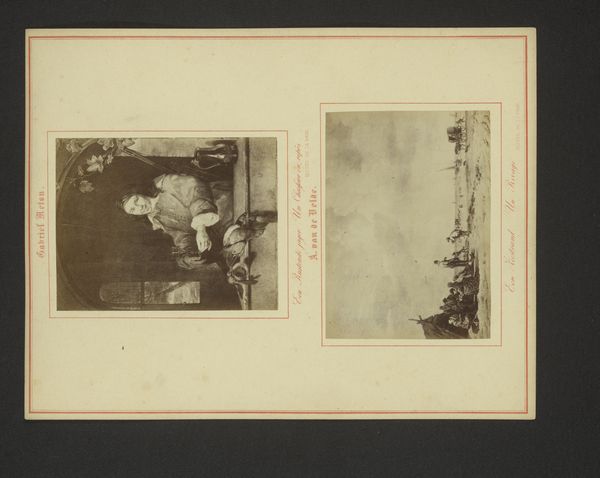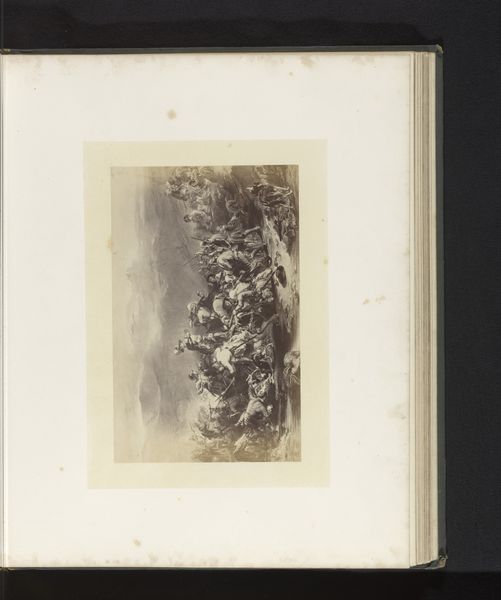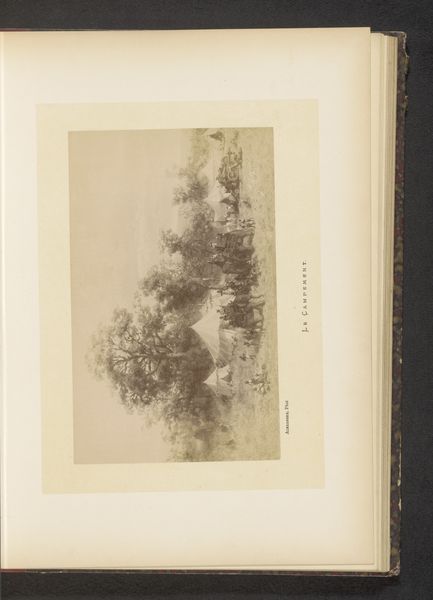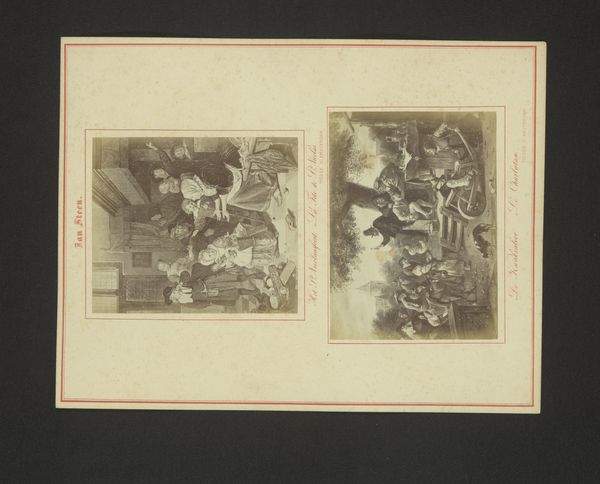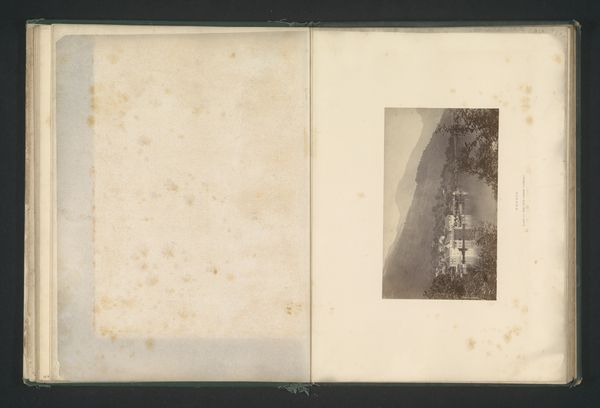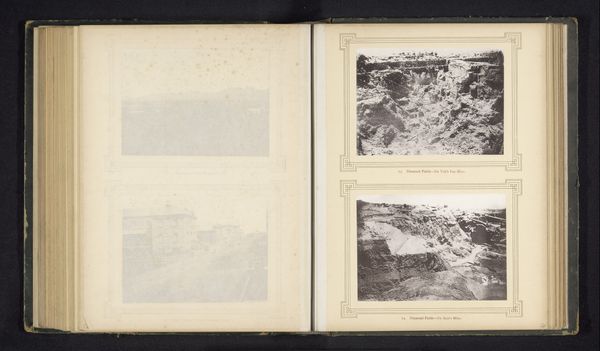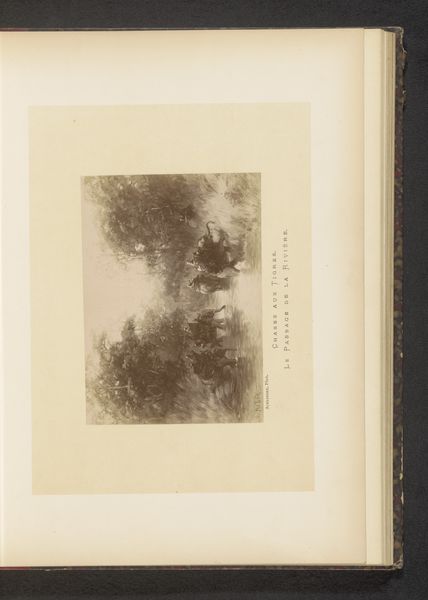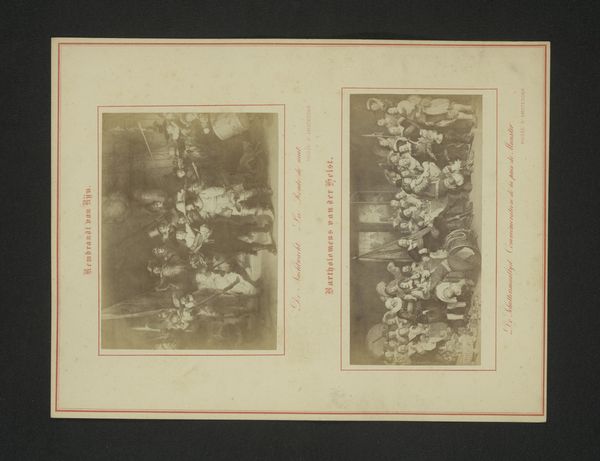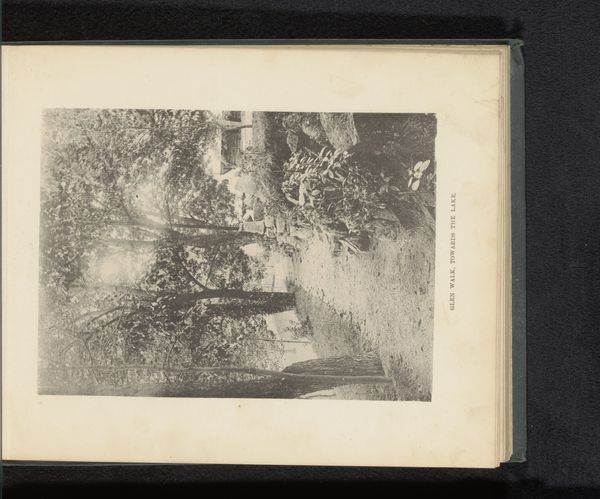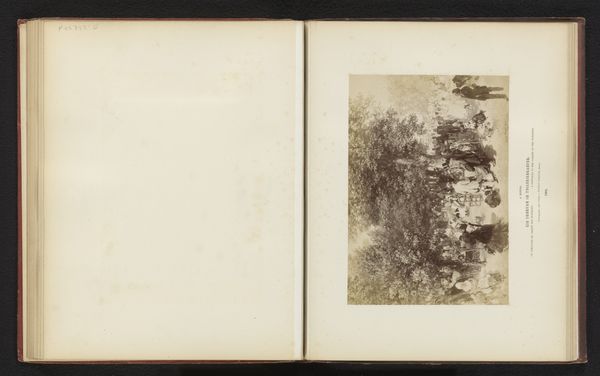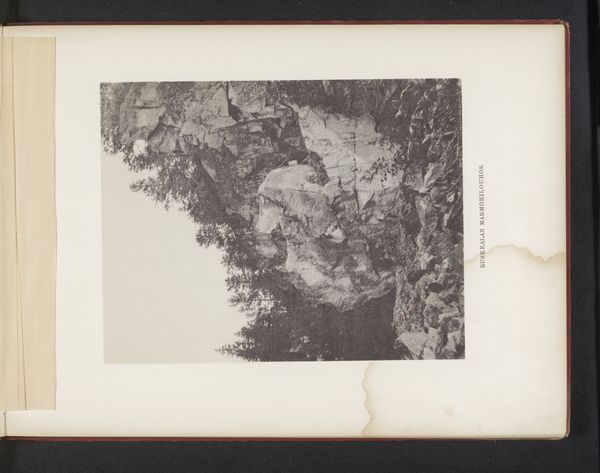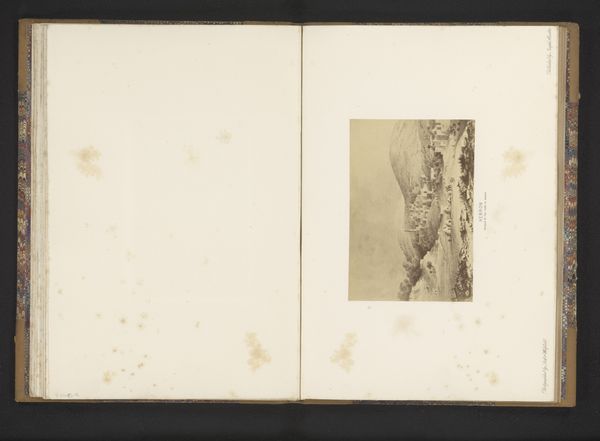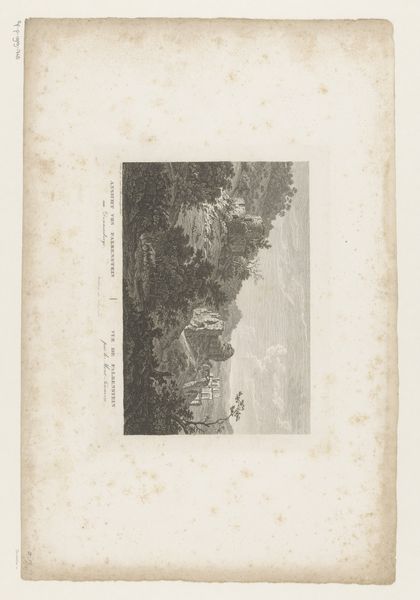
Fotoreproducties van De hooiwagen door Philips Wouwerman en Wilde zwijnenjacht door Nicolaes Pietersz Berchem c. 1866 - 1874
0:00
0:00
anonymous
Rijksmuseum
print, etching, photography
#
still-life-photography
#
dutch-golden-age
# print
#
etching
#
landscape
#
photography
#
horse
Dimensions: height 93 mm, width 121 mm, height 89 mm, width 131 mm
Copyright: Rijks Museum: Open Domain
Editor: This photograph, titled *Fotoreproducties van De hooiwagen door Philips Wouwerman en Wilde zwijnenjacht door Nicolaes Pietersz Berchem*, dates back to around 1866-1874. It presents two scenes, almost like side-by-side snapshots. It's interesting that it’s photographic reproduction of paintings. What strikes you about this work? Curator: It's fascinating because it highlights the complex relationship between artistic creation and reproduction, and the power structures inherent within that. Here we have an anonymous photographer reproducing works by Wouwerman and Berchem, Dutch Golden Age masters. This raises questions about authorship, artistic value, and who has the power to represent and interpret history. Consider, whose vision are we really engaging with here? The painters'? The photographer's? Editor: That's a good point. I hadn’t considered the photographer’s role. It also made me think about accessibility. Were photographs like these intended to make these classic works more accessible to a wider audience? Curator: Exactly. And to what extent does this increased access challenge the established hierarchies of the art world? Were the original paintings portraying upper class recreational activities? Consider also that photographs like this were commodities, contributing to an expanding visual culture and consumerism. Think about how these images might have perpetuated or challenged existing social and political ideologies of the time. Editor: So, beyond just being pretty pictures, they’re actively participating in and reflecting larger social systems. The photograph is not just showing paintings; it’s a cultural artifact in itself. Curator: Precisely. Examining these photographic reproductions invites us to unpack the layers of meaning embedded within the act of reproduction itself. This approach is critical when exploring identity, class and power dynamics operating both within the Dutch Golden Age and during the period in which this reproduction was created. Editor: Thank you, it really changed how I understood the image. Curator: My pleasure. Always remember to consider the full socio-political context of a work and how this relates to wider social conversations.
Comments
No comments
Be the first to comment and join the conversation on the ultimate creative platform.
